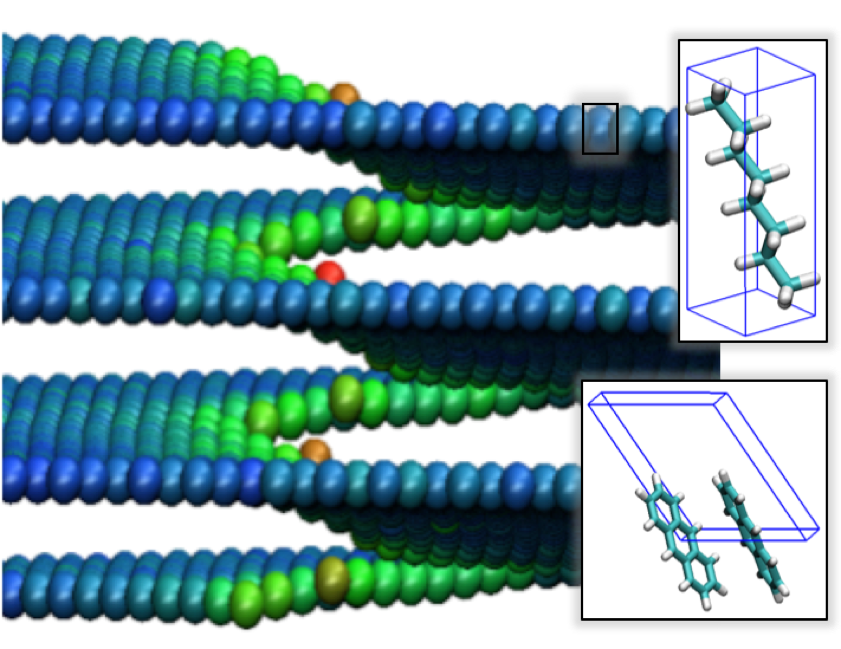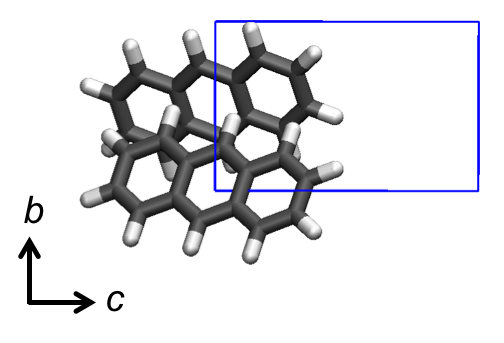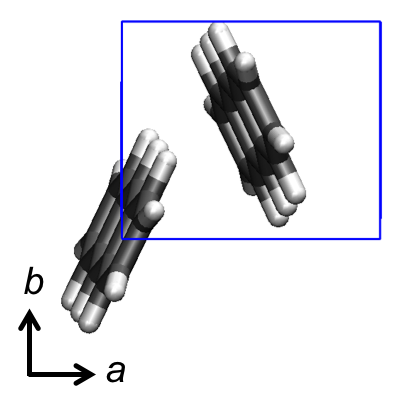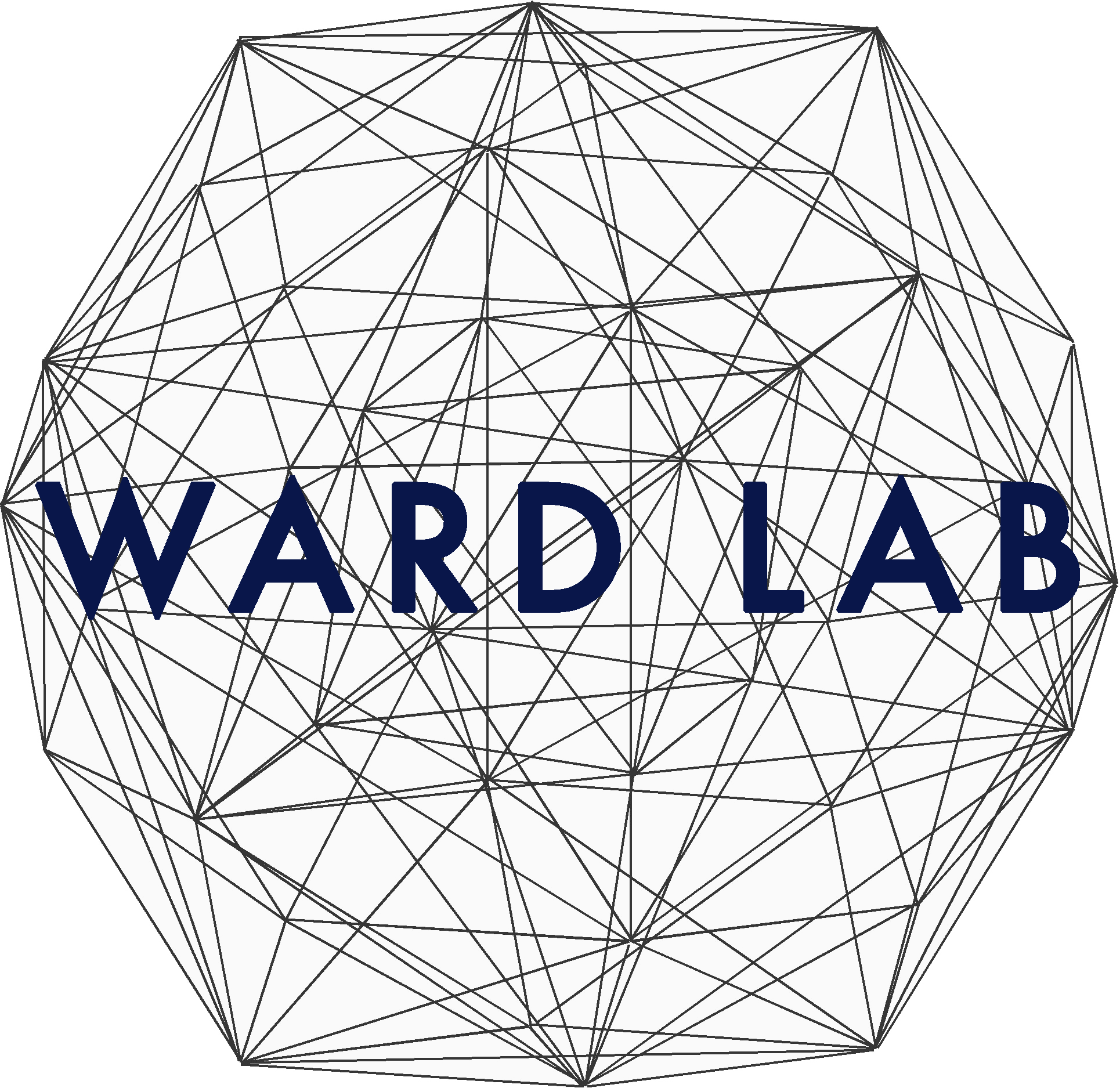Simulations of Screw Dislocations in Molecular Crystals
While computation and transmission electron microscopy have informed the local (core) structures of the ubiquitous screw dislocations in metals and oxides, organic crystals remain terra incognita. We developed a computational strategy using LAMMPS code for studying such spiral defects in flexible straight chained aliphatic and rigid fused-ring polycylic aromatic hydrocarbon crystals with an emphasis on investigating the core energetics, structures, and dynamics. Superlattices were sheared in silico, breaking the crystallographic symmetry with molecules displaced along the Burgers vector. Following MD, the flexible n-alkanes underwent conformational changes in the highly strained cores while the rigid anthracene adopted different orientations and re-established the crystallographic diad symmetry. The role of dislocations and their associated molecular displacements in mediating photochemical reactions in the solid state was also investigated for crystals wherein pairs of molecules are otherwise not predisposed to undergo a pericyclic reaction.



![Molecules are colored red to blue according to their displacements along [110], the Burgers vector direction. Molecules that adopt photolabile geometries are bolded and colored.](https://images.squarespace-cdn.com/content/v1/5aa810b0710699b3a9bd7ca2/1523297140575-DU9TIEG4397UZO31DSI7/isabel5.png)
![Molecules are colored red to blue according to their displacements along [110], the Burgers vector direction. Molecules that adopt photolabile geometries are bolded and colored.](https://images.squarespace-cdn.com/content/v1/5aa810b0710699b3a9bd7ca2/1523297140745-KOC75Y6UTYTCWP48CROF/isabel4.png)
